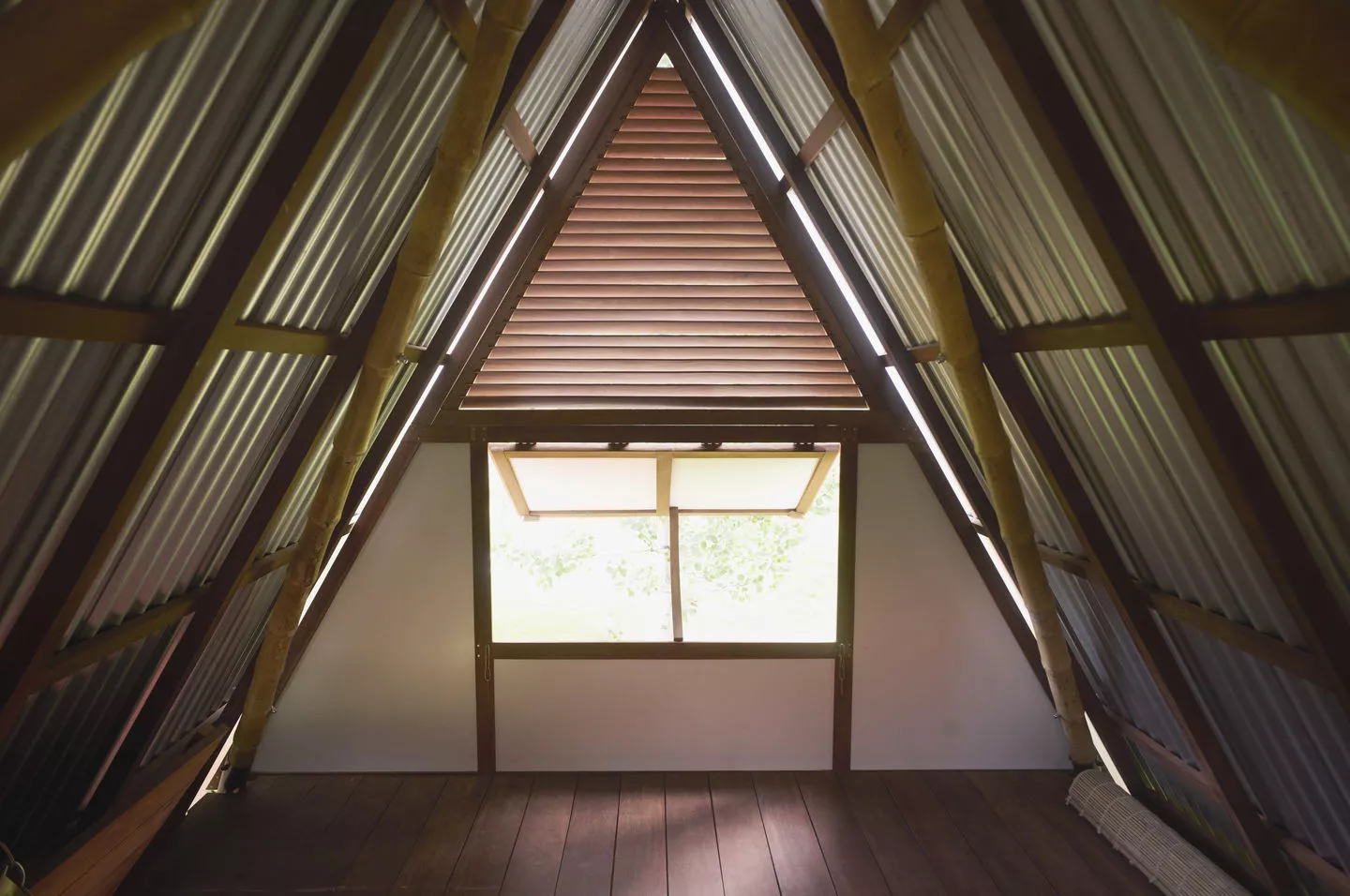With up to 80% of the country classified as floodplain, Bangladesh is extremely vulnerable to flooding, which is a serious concern for the country's population of around 170 million. With this in mind, the Khudi Bari is a low-cost raised tiny house that has been expertly designed to offer a safe and affordable home that can adapt to such challenging conditions.
Created by Bangladeshi architect Marina Tabassum, in collaboration with engineers AKT II, the Khudia Bari (which means small house in Bengali), is raised above the ground and accessed by ladder. Though not on wheels, it has been created to be very easy to assemble, dismantle and move to a new location without any specialist tools, helping Bangladeshi residents escape encroaching floodwater.
The humble dwelling is primarily made from bamboo, as well as prefabricated recycled aluminum nodes to slot the bamboo into. The walls and roof can be sourced locally and made from materials like polycarbonate and metal. The interior measures from 64 sq ft (5.95 sq m) up to 144 sq ft (13.4 sq m) and consists of one simple room, however there is also space underneath to expand living space if desired.
The model shown is currently installed in the Vitra Campus in Germany, which is run by the furniture maker of the same name and contains all sorts of superb architectural designs, including Renzo Piano's Diogene. However, it's not merely a showpiece and over 100 units have actually been deployed throughout Bangladesh already.

"It is an extremely low-cost, lightweight structure that can be assembled and dismantled by hand – without electricity or any other means of mechanical power," explains Vitra's press release. "Marina Tabassum's team has been building these houses in the chars [landmasses made from silt and sand] together with relief organizations and community groups, improving existential conditions for a vulnerable population living at the absolute minimum subsistence level. Over one hundred Khudi Bari have already been installed and more are yet to come."
We've no word on the exact price of the Khudia Bari, though AKT II did previously say during the prototype phase that it was being produced for around £300 (roughly US$380), and that efforts were ongoing to reduce this cost. The project is the latest example of architecture designed for those at risk from climate change, with the Floating Bamboo House and Blooming Bamboo house other notable efforts.
Sources: Vitra, Marina Tabassum Architects, AKT II












